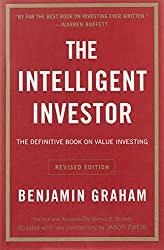
If you’ve been investing for a while, chances are good that you’ve heard of loss harvesting. This is a tax reduction strategy where you sell a stock or other securities in which you have a loss to offset a capital gain you have in a different stock. If you’re good at managing your portfolio, you’ll use loss harvesting to reduce or eliminate any capital gains you make and rarely if ever need to pay capital gains taxes. Once in a while you’ll just need to sell a big winner and not have an offsetting loss, but investments don’t all always work out so you’ll probably have a loss you can use much of the time. In a way, losses become an asset since each one you use saves you a bunch in taxes.
(Note, if you click on a link in this post and buy something from Amazon (even if you buy something different from where the link takes you), The Small Investor will receive a small commission from your purchase. This costs you nothing extra and is the way that we at The Small Investor are repaid for our hard work, bringing you this great content. It is a win-win for both of us since it keeps great advice coming to you (for free) and helps put food on the table for us. If you don’t want to buy something from Amazon or buy a book, how about at least telling your friends and family about our website as a great place to learn about investing and personal finance. Thanks!)
But the strange state of our tax system right now could make it time to coin a new term: gain harvesting. This is because, thanks to the tax laws President Trump pushed through, if you’re a young investor with a modest income or a retiree also with a small income, capital gains taxes may be very low. In fact, even up to a fairly substantial income level, you may owe no federal capital gains taxes! This means that if you have some positions where you have a gain, it may make sense to sell those positions, realize the capital gain, and then invest again to let your money keep growing. In doing so, you’ll remove the looming capital gain tax, making the position bright and sparkly again! In this post, we’ll look at this strategy.


First of all, think about checking with an accountant or a financial planner.
Any post like this needs to come with a disclaimer. I’m not a CPA, just an individual investor with almost 40 years of investing experience. Tax laws are complex and change all the time, so before you do anything, it is best to check with an accountant or financial planner before you act. In the least, do your own research at the IRS website. But any investor should know a bit about tax strategies and use them in his or her investing. You should never make an investment decision based on taxes alone (since you can lose a lot more than you’ll pay in taxes by making the wrong moves), but you should consider taxes when making decisions. Often there is a better way to do things that will save you in taxes.
In this case, we wouldn’t sell a stock just because we have a big gain to take advantage of the tax laws. It is important to be invested and we could miss a big move up if we’re sitting on the sidelines in cash. Stocks that do well also tend to continue to do well, especially when you’re investing for the long-term. But we may sell a stock at a gain, realize the gain, then buy back in to continue to profit if we still like the stock.

Try Amazon Prime 30-Day Free Trial
Capital Gains Taxes
A capital gain, where you sell an asset like a stock or piece of real estate at a profit, is considered different than other types of income. If you hold a stock long enough for it to be considered a long-term capital gain, right now a year and a day, it is taxed at rates that are substantially less than your income from employment. And normally it is the positions you’ve held a long time that will have a substantial gain. If you can get a 15% return, which is totally possible for a quality growth stock, you’ll see your position doubling every five years. Your portfolio will be filled with stocks with big gains if you follow the high growth, long-term investing approach recommended by The Small Investor and in FIREd by Fifty. This means that you’re looking at paying a lot in capital gains taxes when you finally do sell.

The federal capital gains rates, as of right now in 2022, are as follows:
Capital Gains RateTaxable Income (Single)Taxable Income (Married Filing Jointly)
0%Less than $41,675Less than $83,350
15%$41,675 to $459,750$83,350 to $517,200
20%More than $459,750More than $517,200
2022 Capital Gains Tax Rates, via KiplingerNote that this is taxable income, which is your income after you take whatever deductions you can take. (It does include your capital gains!) So, if you’re single and fairly early in your career where you aren’t yet making the big bucks, your income is probably low enough to have a $0 capital gains tax rate. If you’re a young married couple, you can jointly make up to $83,350 in taxable income (around $100,000 in total income because of the standard deduction). If you have a mutual fund that has grown from $10,000 to $20,000 over the last several years, rather than sit on it and let that capital gain keep growing, you could sell it now, realize the gain while your income is low enough to pay no tax, then buy back in and let it keep growing.

If instead you let it keep growing and do nothing, if you sell later when your income from work (or from your investments because you’ve read and followed the advice in FIREd by Fifty for 20 to 30 years) is higher, you’ll pay a $1500 or $2000 in capital gain taxes on that gain. Each time you sell the gain, you can reset the score and reduce or eliminate that tax!
Note that even when your income is a bit higher, as long as you’re not a wealthy executive pulling in a huge income or living the large life with a big investment portfolio, your tax rate will still only be 15% when you realize gains. Selling a bit as you go, rather than letting it grow to the point where you’re making a $1,000,000 gain all at once, will save you a lot. Get rid of that ticking tax time bomb.
Four words of caution here:
- The first is that this is the federal tax. Depending on your state, you’ll probably owe some state taxes, so be sure to consider this when you’re deciding if you want to take a gain. If you do take a gain, be sure to hold back enough of the sale to pay the taxes.
- Remember that this must be a long-term capital gain. Sell it after holding too short a time and you’ll owe regular income taxes on the gain.
- Remember that the gain is part of your income, so the total of your capital gains and your work income must be below the thresholds to avoid paying a tax or at least paying a lower tax.
- The last is that these are the tax laws right now, and they are likely to change, so be sure to stay current through your own research or work with a CPA or financial planner who does.
Why gain harvesting is different than loss harvesting
So, often when you are doing loss harvesting, you don’t really want to sell the losing stock because you still like the stock and now it is cheaper and an even bigger screaming deal than it was when you bought it at the higher price. So you think you’ll trick Uncle Sam by selling the stock at a loss and immediately buying it back. Or maybe you want to make sure that you don’t miss out on a big jump up by not being invested for even a second, so you buy additional shares of the company and then sell the ones you have at a loss. Uncle Sam got wise to this “selling but not really selling” and created a law called the wash rule where if you buy the same security (or something substantially the same) within 30 days of selling at a loss, you can’t deduct the loss.
But there is no rule against taking a gain and then buying in again! Because gains were taxed in the past, Uncle Sam didn’t care if you decided to take again and pay him. But now, since capital gains rates are zero for many people, it may make sense to take a gain and then buy right back in to avoid paying a big capital gains tax later. The regulators haven’t caught on to this yet, so there is an opportunity to take advantage. They probably will catch on eventually and make some sort of wash rule for gains, but for right now the opportunity is there.

Try Audible Plus
Take advantage before the rules change
Capital gains rates change all of the time. They have been a lot higher in the last and probably will be again. It really makes sense to take advantage of the low or zero rates now if you are a long-term investor and will have growing capital gains over your lifetime. It will mean a little effort and a little bookkeeping on your part, but you can save a lot on taxes in your taxable account.
That said, remember that all of this can change with a new law and that sometimes Congress make new tax rules retroactive at least for the year to catch people who saw the law change coming and tried to sell early to avoid the taxes. If you’re worried laws could be changed, maybe wait to do tax gain harvesting in December when you’re fairly sure that the law won’t change at least for that year. Also, be sure to keep up on tax laws or, once again, talk to a CPA of financial planner.
Want to learn a lot more about stock investing?
If you want to go from being one of the crowd to a sophisticated investor, pick up a copy of

Have a burning investing question you’d like answered? Please send to [email protected] or leave in a comment.
Disclaimer: This blog is not meant to give financial planning or tax advice. It gives general information on investment strategy, picking stocks, and generally managing money to build wealth. It is not a solicitation to buy or sell stocks or any security. Financial planning advice should be sought from a certified financial planner, which the author is not. Tax advice should be sought from a CPA. All investments involve risk and the reader as urged to consider risks carefully and seek the advice of experts if needed before investing.
